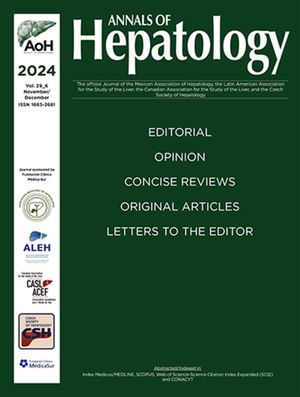
Abstracts of the 2023 Annual Meeting of the ALEH
Más datosNo
Introduction and ObjectivesHepatocellular carcinoma is the 3rd deadliest type of cancer worldwide and metabolic dysfunction-associated steatotic liver disease is the fast-growing cause of liver disease. Ultra-processed foods are consumed in Westernized-style diets (WD) and emulsifiers, especially carboxymethylcellulose (CMC) and polysorbate 80 (P80), feature among the most consumed food additives globally. Nevertheless, the effects of these additives on hepatocarcinogenesis still elusive. Thus, we assessed the effects of populational-based doses of CMC/P80 in a murine model of MASLD-associated hepatocarcinogenesis.
Patients / Materials and MethodsMale C57BL/6J mice were allocated into 8 groups and received intraperitoneal doses of diethylnitrosamine (25 mg/Kg of b.w., 1 × /week, G1-G8) for 4 weeks. By the 6th week, mice were fed a WD (G2-G8) or a basal diet (G1) for 24 weeks. At the 10th week, mice received intragastric doses of CMC (370.0/740.0 mg/Kg of b.w., G3/G4), P80 (100.0/200.0 mg/Kg of b.w., G5/G6), or their combination (370.0+100.0/740.0+200.0 mg/Kg of b.w., G7/G8) or vehicle (G1/G2) for 20 weeks (5 × /week). A glucose tolerance test was performed and hepatic tumoral/non-tumoral and serum samples were collected. Data were analyzed by one/two-way ANOVA or Kruskal-Wallis and Tukey's/Dunn's post hoc tests.
Results and DiscussionPronounced final body weight/adiposity index (p<0.0001) were observed in G5-G7. Tumor incidence/multiplicity were not altered by emulsifiers, but G6/G8 showed a higher proportion of larger tumors (>50mm3, p<0.0001). Hepatocellular adenoma occurrence was frequent in all groups. WD-fed mice showed a glucose intolerance profile (p<0.0001). G2/G5-G7 shared a similar macro/microvesicular steatosis (p<0.0001) aspect, whereas hepatocellular hypertrophy was pronounced in G5-G7 (p<0.0001). No differences were observed in lobular inflammation or alanine aminotransferase, total cholesterol, and triglycerides levels.
ConclusionsOur findings revealed that populational-based doses of emulsifiers promotes MASLD-associated hepatocarcinogenesis by pronouncing hepatic steatosis and the adiposity index.









